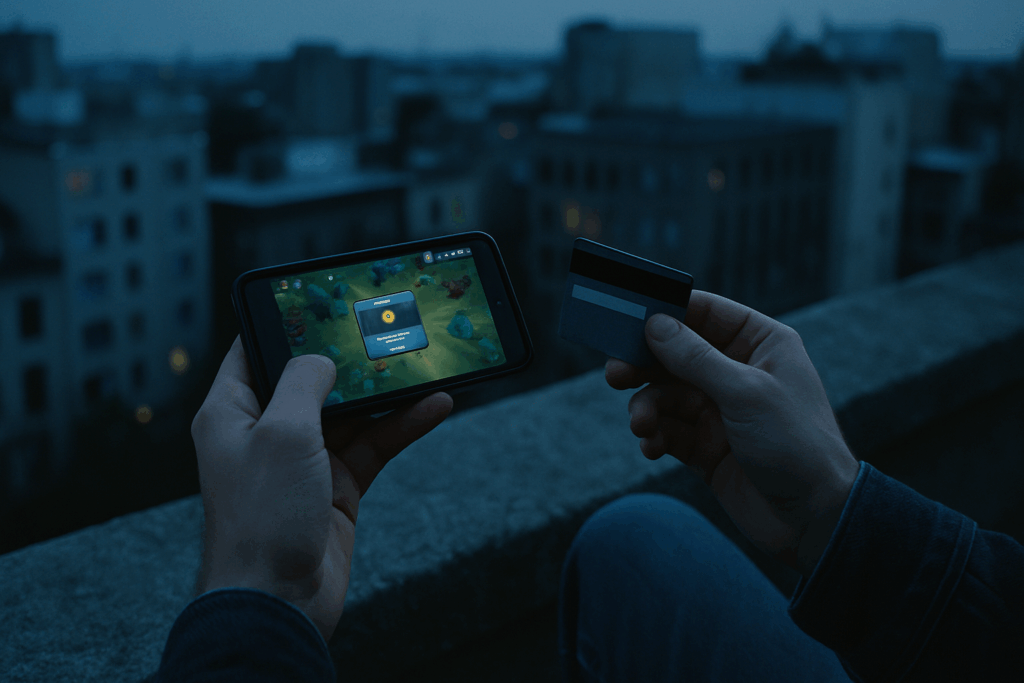Why Players Stay Engaged: Curiosity, Control, and Reward
Understanding what drives player engagement goes beyond graphics or gameplay mechanics. At the core, three key psychological triggers keep players coming back: curiosity, autonomy, and the thrill of discovery.
Curiosity as a Core Player Motivation
Humans are naturally curious, and games thrive on this instinct. Well-designed games constantly present mysteries to unravel, environments to explore, and mechanics to master.
- Players are drawn to unanswered questions and hidden content
- Strategic content reveals encourage ongoing exploration
- Mystery encourages session-to-session engagement
Developers who tap into curiosity can create meaningful hooks that keep players invested for hours.
Autonomy and Decision-Making Power
Players value agency. The ability to make meaningful choices gives a sense of ownership over the experience. Whether it’s customizing a character, choosing a narrative path, or managing resources, player control elevates engagement.
- Offer multiple solutions to in-game challenges
- Let choices impact outcomes to increase replayability
- Avoid overly linear structures that remove player input
When games balance structure with autonomy, they become more personal and memorable.
The Dopamine Loop of Discovery and Achievement
Games excel at creating reward cycles. Whether it’s leveling up, unlocking gear, or completing story arcs, each achievement triggers a small dopamine release that reinforces the gameplay loop.
- Use short-term goals to fuel long-term progress
- Reward players frequently with feedback, visuals, or new content
- Combine randomness with predictability to balance anticipation and satisfaction
When done well, this feedback loop becomes self-sustaining, making gameplay rewarding even without external motivators.
By understanding and leveraging curiosity, autonomy, and reward-based discovery, creators can build experiences that are not only fun but compelling over time.
Immersive Game Worlds Are Raising the Bar
Environmental Storytelling: Lore in Every Corner
Gone are the days when plot was confined to cutscenes or dialogue boxes. In today’s most compelling games, the world itself tells the story. Players explore deeper through subtle details—abandoned structures, graffiti on walls, artifacts left behind, or even the layout of a single room.
What this means for developers and world-builders:
- Every object or location should have a purpose or story behind it
- Visual storytelling can invite players to make their own discoveries
- Environment design helps convey lore without heavy exposition
Dynamic Worlds That Live and Breathe
Modern gamers expect more than static backgrounds. Games are increasingly adopting:
- Day and night cycles that affect gameplay and atmosphere
- Weather systems that feel organic and unpredictable
- Living NPCs with unique routines, responses, and interactions
This creates a layered, responsive world that feels alive even when the player isn’t actively triggering events. When worlds behave independently, players are more likely to get lost in them.
Immersion Directly Impacts Engagement
More immersion leads to more time spent in-game. When players feel like they’re stepping into an evolving, believable environment, they stay longer, explore deeper, and return more often.
Benefits of enhanced immersion:
- Extended gameplay sessions
- Increased narrative investment
- Stronger emotional connection to the game world
Immersive design is no longer optional—it’s quickly becoming a standard for standout titles in 2024.
Open-world games are hitting harder than ever. From blockbuster releases to indie surprises, titles that let players roam freely across vast maps are topping charts and flooding Twitch streams. The reason is pretty clear: people want freedom. In a world full of restrictions and rigid routines, these games offer escape—a place to wander, explore, and decide what comes next.
That sense of autonomy resonates. Whether you’re chasing side quests in a post-apocalyptic wasteland or building a quiet farm on a pixelated island, it’s your call. Players aren’t just reacting to missions—they’re writing their own storylines. Compare that to the stiff rails of linear games, where every move is pre-scripted. There’s charm in structure, sure. But modern gamers are leaning toward playstyles that give them breathing room, not hand-holding.
When freedom meets purpose, engagement skyrockets. That’s why open-world design is more than a trend—it’s becoming the standard.
There’s no wrong way to vlog anymore. Some creators chase the high of a packed content calendar—reviews, reactions, day-in-the-life, brand drops, tutorials—all lined up like missions in a campaign. Others take the sandbox approach. They meander, experiment, and let their audience shape the journey.
Side quests have taken off. Not every video needs to be the main event. A casual “coffee walk” or a behind-the-scenes look at an editing setup can earn just as much love as a polished vlog series. Collectibles are in too: recurring bits, custom lingo, visual motifs. They give lightweight content surprising weight and help build long-term connection.
More than ever, replayability comes from freedom. Viewers rewatch not for challenge or polish but for vibe, personhood, or a moment they just want to experience again. The power is in choice—what to post, watch, or return to. That’s the core shift in how creators and followers engage in 2024.
The Legend of Zelda: Breath of the Wild thrives on giving players the reins. From the moment you step out of the Shrine of Resurrection, the game trusts you. No glowing arrows. No railroads. Just a massive world filled with systems that work together, quietly encouraging experimentation. Want to glide into enemy territory, light the grass on fire, or roll bombs into a camp? Go ahead. The freedom is real, and the sense of ownership over every moment is what keeps players engaged long after the main quest.
Elden Ring takes a different route. It hides everything in plain sight. The mystery is the appeal. There’s no quest log, no blinking marker telling you what’s next. Players are thrown into a sprawling, brutal world and forced to observe, explore, and adapt. That’s the challenge. You’re not just fighting monsters, you’re unraveling how the world works. The game respects your intelligence, and rewards persistence with quiet revelations and unexpected pathways.
Red Dead Redemption 2 flips the script with cinematic realism. It’s slower, tighter, more deliberate. Every action — every drawn-out campfire cook or resonance in a voice line — is about immersion. You’re not just controlling Arthur Morgan, you’re living as him. It’s a form of agency that trades speed for texture. The game makes you care because it grounds you in time and place. You don’t just ride from one mission to another. You exist inside the story.
Together, these games show there’s no one way to do player agency. Whether through freedom, mystery, or realism, the best experiences make you feel like you’ve chosen your path, even when the game quietly guides your way.
Game devs aren’t just laying out levels anymore. They’re crafting entire ecosystems—living, breathing spaces that evolve and pull players in for more than just checkpoint rushes. Worlds now feel less like playgrounds and more like alternate realities where every corner could tell a story, and every NPC might matter.
The new focus isn’t on cramming as much content as possible into every square inch. It’s about pacing, relevance, and the impression that the world reacts to your presence. Instead of hitting players with a wall of tasks, developers are prioritizing interactions that feel personal, even when they aren’t.
AI and procedural tools are making this scale functional. Studios are using them to build larger maps without sacrificing coherence. Infinite forests, shifting weather systems, evolving cities—it’s all becoming standard, not sci-fi. These tools don’t replace creativity—they give it more room to breathe.
For vloggers covering games, this shift means more narrative angles. More to explore. And more reason to dig into the world, not just the main quest.
Open-world vlogging content is walking a tightrope. While the freedom and vastness of open concepts used to excite viewers, that same sprawl is starting to wear thin. Creators are finding that massive video series with no clear thread—much like bloated game maps—can actually drive audience fatigue. Wandering aimlessly through updates or day-in-the-life content without structure tends to blur together and lose punch.
Another issue: weak central narratives. Without a defined storyline or recurring hook, viewers bounce fast. Even in the open-world format, there needs to be a spine—whether it’s a long-term goal, community challenge, or a recurring character arc.
Creators who balance exploration with purpose hold attention longer. Vlogs that showcase freedom but tie it to personal growth, behind-the-scenes stakes, or a loose episodic arc hit harder. In 2024, the challenge isn’t just about showing more—it’s about showing with intent.
Exploration That Feels Human
Why Exploration Feels So Good
There’s something primal about the urge to explore. Since the earliest days of gaming, open-world exploration has tapped into our natural curiosity—our need to discover, poke around the unknown, and map new territory. Good open-world games understand this and give players a sense of agency without forcing outcomes.
- Exploration triggers player curiosity
- It creates ownership over the journey
- Game worlds that encourage wandering feel more immersive
Soul Over Size
Gamers are no longer impressed by vast, empty maps. What players crave today are worlds rich in personality, not just geography. The best open worlds aren’t the biggest—they’re the most meaningful. It’s about atmospheric design, hidden stories, and handcrafted moments that make players want to look under every rock.
Look for environments that:
- Feel lived in and layered
- Offer surprises beyond the main quest
- Reward observation and curiosity
Final Thoughts: Wander with Purpose
When developers design with intention, not just scale, they create open worlds that feel real and rewarding. Letting players roam without rigid structure doesn’t mean giving up on story or pacing. It means trusting them to find their own fun. A well-built world doesn’t need constant nudging—it invites exploration by design.
- Design worlds that inspire movement
- Avoid over-directing the player
- Create space for discovery, not just objectives
See also: Player Review: Pros and Cons of the New Call of Duty Installment
Tight, level-based design still pulls its weight in 2024. While open-world formats and sandbox mechanics get most of the hype, there’s something undeniably effective about structured, purpose-built levels. For vloggers covering games, these types of designs make it easier to create digestible content: one level equals one focused video, with a clear beginning, challenge, and payoff.
It also keeps the pacing tight. Viewers stick around because each segment feels intentional. There’s no wandering or dragging; it’s punchy. And in a creator economy driven by retention metrics, that clarity matters. Structured levels help both players and audience stay engaged without burnout from endless sprawl.
Gamers return to these setups not because they’re nostalgic, but because they’re rewarding. Everything has a place. For content creators, that simplicity is a tool—both for storytelling and editing.





